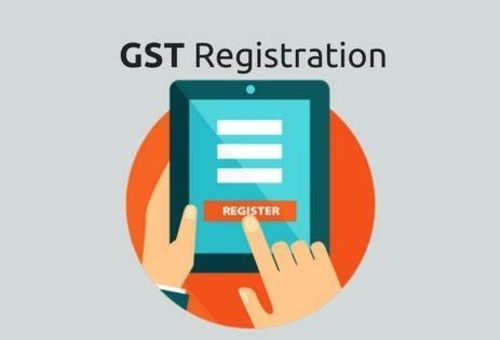Why Singapore GST Registration is Vital for Your Startup
Why Singapore GST Registration is Vital for Your Startup
Blog Article
Making The Most Of Tax Efficiency: Expert Tips on Navigating the GST Registration Maze for Small Companies
Browsing the detailed landscape of Goods and Provider Tax Obligation (GST) registration can be a labyrinthine task for small companies aiming to optimize their tax obligation effectiveness. Understanding the eligibility criteria, thorough documents demands, tactical timing factors to consider, and adept enrollment process tips can significantly influence a company's financial standing. Conformity with GST policies is paramount, and sticking to best practices can simplify operations and prevent possible mistakes. In this conversation, we will discover professional understandings and actionable suggestions that can encourage local business to browse the GST registration puzzle effectively and maximize their tax obligation efficiency.
Qualification Criteria
Eligibility needs for Small company GST Registration incorporate specific criteria that services have to meet to follow tax obligation regulations. To qualify for GST enrollment, a service should have a yearly turn over going beyond the limit set by the tax authorities, which varies by country. Furthermore, services entailed in inter-state supply of services or goods, or those selling products online, may be needed to register for GST, irrespective of their turnover. It is necessary for organizations to properly establish their qualification based upon these turn over limits to stay clear of penalties for non-compliance. Singapore GST Registration.

Documentation Needs
To effectively complete the procedure of GST registration, small companies have to ensure they have all necessary documents in order. The needed documentation generally consists of proof of business enrollment or identification, consolidation and address proofs of the service owner, pictures, checking account details, and proof of the principal workplace. In addition, businesses require to provide information of their company tasks, including the services or items provided. It is vital to make sure that all documents are precise, as much as date, and in the defined format to stop hold-ups or rejections during the enrollment procedure.
Maintaining all required documents arranged and readily accessible can enhance the registration procedure and assistance businesses conform with the needs efficiently. Careful attention to information and adherence to the documentation guidelines are vital for a successful GST registration procedure for tiny organizations.
Timing Factors To Consider
Considering the crucial paperwork needs have been thoroughly dealt with, the following crucial element for local business starting the GST enrollment procedure is the tactical administration of timing factors to consider. Timing plays a critical duty in GST enrollment, impacting not just conformity but likewise economic aspects of the company. Tiny businesses need to very carefully intend the timing of their GST enrollment to maximize advantages and minimize potential risks.

In addition, companies should align the timing of their GST enrollment with their functional preparedness. Appropriate preparation, such as updating bookkeeping systems and training personnel, is important to flawlessly incorporate GST demands into daily operations. By purposefully taking care of timing factors to consider, small businesses can navigate the GST enrollment procedure effectively and optimize their tax efficiency.
Enrollment Refine Tips
Successfully navigating the GST enrollment procedure calls for small companies to apply strategic and positive enrollment procedure tips. This includes organization registration files, evidence of address, financial institution statements, and identification evidence of the organization owners.
Additionally, comprehending the limits and requirements for GST registration based on the certain state or region where the business operates is necessary. Some states have different turn over limits that trigger compulsory enrollment, so being informed about these thresholds can assist services intend in advance.
Another valuable suggestion is to take into consideration looking for professional assistance from accountants or tax specialists who focus on GST registration. Their experience can improve the procedure, minimize mistakes, and make sure compliance with all guidelines.
Compliance Finest Practices
Little organizations need to focus on compliance to prevent fines and maintain a great standing with tax obligation authorities. Tiny business owners must regularly evaluate federal government standards and look for professional guidance if required to guarantee they are meeting all requirements. By incorporating these compliance finest techniques right into their procedures, small companies can navigate the complexities of GST registration with self-confidence and performance.
Verdict
In conclusion, small companies can navigate the GST registration labyrinth by ensuring they satisfy eligibility requirements, collect needed documents, think about timing effects, follow enrollment process suggestions, and adhere to conformity best practices. By optimizing tax obligation effectiveness with appropriate GST registration, businesses can enhance their financial this content monitoring and procedures.
Navigating the elaborate landscape of Goods and Services Tax Obligation (GST) enrollment can be a labyrinthine task for small organizations intending to maximize their tax performance.Qualification demands for websites Small Company GST Enrollment incorporate certain criteria that businesses have to satisfy to comply with tax obligation guidelines. The called for documentation typically consists of proof of business enrollment or consolidation, address and identity proofs of the organization owner, pictures, bank account information, and proof of the major location of business. Furthermore, businesses require to provide information of their business tasks, including the services or items supplied.Successfully navigating the GST enrollment process needs small organizations to execute strategic and aggressive registration procedure tips.
Report this page